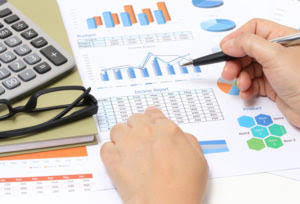Content


Manufacturing costs are also known as factory costs or production costs. Manufacturing costs are directly attributed to the products manufactured . Manufacturing costs form part of cost of goods sold and are carried as part of inventory in the balance sheet till the inventory is sold out. Marketing and advertising costs – marketing campaign costs, advertising agency fees etc. When a job is complete, the output is transferred from the factory to the finished goods stores. The cost of this job is transferred from the work in progress account to the finished goods account.


The type and quantity of each type of direct material needed to complete a unit of product is listed on the ______. Identify whether each item in the following should be categorized as a product cost or as period cost. Also indicate whether the cost should be recorded as an expense when the cost is incurred or as an expense when the goods are sold. The costs of workers who are involved in the production process but whose time cannot easily be traced to the product.
CUSTOMER SERVICE
Marketing or selling costs include all costs necessary to secure customer orders and get the finished product into the hands of the customers. These costs are often https://www.bookstime.com/ called order getting or order filling costs. Examples of marketing or selling costs include advertising costs, shipping costs, sales commission and sales salary.
What is included in overhead costs?
Overhead expenses are what it costs to run the business, including rent, insurance, and utilities. Operating expenses are required to run the business and cannot be avoided. Overhead expenses should be reviewed regularly in order to increase profitability.
No strong decrease in overhead spending for these eight companies was apparent. Table 1.2 “Manufacturing Costs at Custom Furniture Company” provides several examples of manufacturing costs at Custom Furniture Company by category. All costs related to the production of goods; also called product costs. Labor costs that can be physically and conveniently traced to a product such as assembly line workers in a plant.
What is nonmanufacturing cost in accounting?
Learn about the definition of accounting cycle and know about the steps of accounting cycle along with some examples. Gross profit, which is highlighted in green, was ~$921 million for Q2 2019, which was higher than the ~$618 million for the same period in 2018. Anderson is CPA, doctor of accounting, and an accounting and finance professor who has been working in the accounting and finance industries for more than 20 years. Her expertise covers a wide range of accounting, corporate finance, taxes, lending, and personal finance areas. The adjustment for underapplied overhead ______ net income. An essential quality of an overhead allocation base is that it must ______.
- Nonmanufacturing costs consist of selling expenses, including marketing and commission expenses and sales salaries and administration expenses, such as office salaries, depreciation and supplies.
- The number of payroll checks prepared should be a reliable measure of the activity of the payroll department.
- The result, or net sales, is recorded at the top line of the income statement in place of revenue, which is typical for retailers.
- For instance, in our example of Friends Company, the company purchases metal parts to produce valves.
- A manufacturing entity incurs a plethora of costs while running its business.
These costs are reported on a company’s income statement below the cost of goods sold, and are usually charged to expense as incurred. Since nonmanufacturing overhead costs are treated as period costs, they are not allocated to goods produced, as would be the case with factory overhead costs. Since they are not allocated to goods produced, these costs never appear in the cost of inventory on a firm’s balance sheet. All manufacturing costs that are easily traceable to a product are classified as either direct materials or direct labor. All other manufacturing costs are classified as manufacturing overhead.
Manufacturing Costs:
If the mark-up percentage is 40%, the job will sell for $________. To calculate the unit product cost using the job cost sheet ______ by the number of units produced.
What are fixed overhead costs?
Fixed overhead costs are costs that do not change even while the volume of production activity changes. Fixed costs are fairly predictable and fixed overhead costs are necessary to keep a company operating smoothly. However, profit margins should reflect the costs of fixed overhead.
The gross profit is calculated by subtracting a company’s cost of goods sold from its revenue. Based on this information, the amount of overhead allocated to a job that used 300 direct labor hours is $_________.
Manufacturing costs:
For instance, if you operate a retail store, you may pay 56 cents for a candy bar and sell it for 75 cents, so it would seem like you make a profit of 19 cents on each bar. The rates are different for residential, commercial, or industrial usage. Sometimes, you get a lower rate for additional square feet. Say the first 100 square feet is rented at P200/ft a month.
- Costs may be classified as manufacturing costs and non-manufacturing costs.
- In short, gross profit measures how well a company generates profit from their labor and direct materials.
- Lime stone is direct material for the manufacturers of cement.
- Nonmanufacturing, also known as “period” costs, consists of selling and administrative expenses.
- Note 1.43 “Business in Action 1.5” details the materials, labor, and manufacturing overhead at a company that has been producing boats since 1968.
All nonmanufacturing costs are not related to production and are classified as either selling costs or general and administrative costs. Nonmanufacturing costs are necessary to carry on general business operations but are not part of the physical manufacturing process. These costs are represented during a period of time and are not calculated into the cost of good sold. Nonmanufacturing costs consist of selling expenses, including marketing and commission expenses and sales salaries and administration expenses, such as office salaries, depreciation and supplies. For manufacturing companies, product costs are only costs that are necessary to produce a finished product.
Are selling costs included in absorption costing?
Direct labor – cost of labor expended directly upon the materials to transform them into finished goods. Direct labor refers to salaries and wages of employees who work to convert the raw materials to finished goods. Non-manufacturing costs cannot be directly Nonmanufacturing Overhead Costs attributed to the products manufactured. Non-manufacturing costs are incurred by all type of business entities – entity can be a manufacturing, trading or service entity. Manufacturing cost is the core cost categorization for a manufacturing entity.


Direct materials are raw materials that become an integral part of the finished goods. PRODUCTS COSTS and MANUFACTURING COSTS are technically the same.
It will tell you if you are really losing money on sales, or which products are most profitable. To find COGS, start with the dollar value of beginning inventory and add the cost of goods manufactured for the period. Subtract the ending inventory dollar value, and the result is cost of goods sold. There are three types of manufacturing production process; make to stock , make to order and make to assemble . All these expenses are recorded in the period they were incurred. NON-MANUFACTURING COSTS – from the term itself, costs that are not attributable to the manufacture of products. The classification would depend on the management, whether the cost is material enough to be considered direct, or some other factor they wanna base their decision.
These include rent of office space, advertising, sales commission, utilities and supplies in the office. Practically includes administrative and selling expenses. MasterCraft produces boats for water skiers and wakeboarders. Each boat produced incurs significant manufacturing costs. MasterCraft records these manufacturing costs as inventory on the balance sheet until the boats are sold, at which time the costs are transferred to cost of goods sold on the income statement.
Product Costs
How much does this differ from the actual direct labor cost? Break down the difference computed in requirement 1 into a labor rate variance and a labor efficiency variance. A measure such as direct labor-hours or machine hours used to assign overhead costs to products and services is called a cost driver or a _______ _______. The document that records the materials, labor, and manufacturing overhead costs charged to a job is the ______. Examples of nonmanufacturing costs appear in Figure 1.5 “Examples of Nonmanufacturing Costs at Custom Furniture Company”. The sum of direct labor cost and manufacturing overhead cost is known as conversion cost.
Direct labor manufacturing costs is determined by calculating the cost of employees directly responsible for producing the product. For example, a clothing manufacturer considers employees that dye the cloth, cut the cloth and sew the cloth into a garment as direct labor costs. However, designers and sales personnel are considered nonmanufacturing labor costs. In the end, management should know whether each product’s selling price is adequate to cover the product’s manufacturing costs, nonmanufacturing costs, and required profit. For apportionment of overheads, there are no hard and fast rules for which basis of apportionment to use except that whichever method is used to apportion overheads, it must be fair.
Manufacturing and non-manufacturing costs together form total costs for a manufacturing entity. They are impacted by different factors and thus their appropriate categorization is important. Manufacturing cost overruns indicate production inefficiency whereas non-manufacturing cost overruns indicate inefficiency in other areas of operations. Each of them requires a different set of cost control measures, making appropriate cost categorization even more essential.
- It will tell you if you are really losing money on sales, or which products are most profitable.
- For instance, standards may be used for office personnel involved in processing sales orders and a standard unit expense for processing a sales order may be derived.
- Sign in to the product or service center of your choice.
- Gross profit is typically used with companies like Tesla that need to invest significant sums in R&D, which should lead to profitability in the long term.
- Average manufacturing overhead cost per unit usually varies from one period to the next because ______.
- So far, the only capacity- related expense we have listed is the cost of the stove.
- The finished product of a company may become raw material of another company.
The principal financial cost is the interest on working capital advance, term loans, and debentures. Other financial costs that may be incurred by a business are commitment fee and bank commission. Answer Direct labor would include the workers who use the wood, hardware, glue, lacquer, and other materials to build tables. Learn the definition of the cost of goods sold and the formula used to calculate it. Also, learn how the cost of goods sold is calculated using examples.
The budgeting process usually begins with preparing the strategic budgets. The master budget is a group of detailed budgets and schedules representing the company’s operating and financial plans for the past accounting period. Preparing the master budget begins with the cash budget. The master budget usually includes operating budgets and capital budgets, and pro forma financial statements. A work-in-progress is a partially finished good awaiting completion and includes such costs as overhead, labor, and raw materials.
